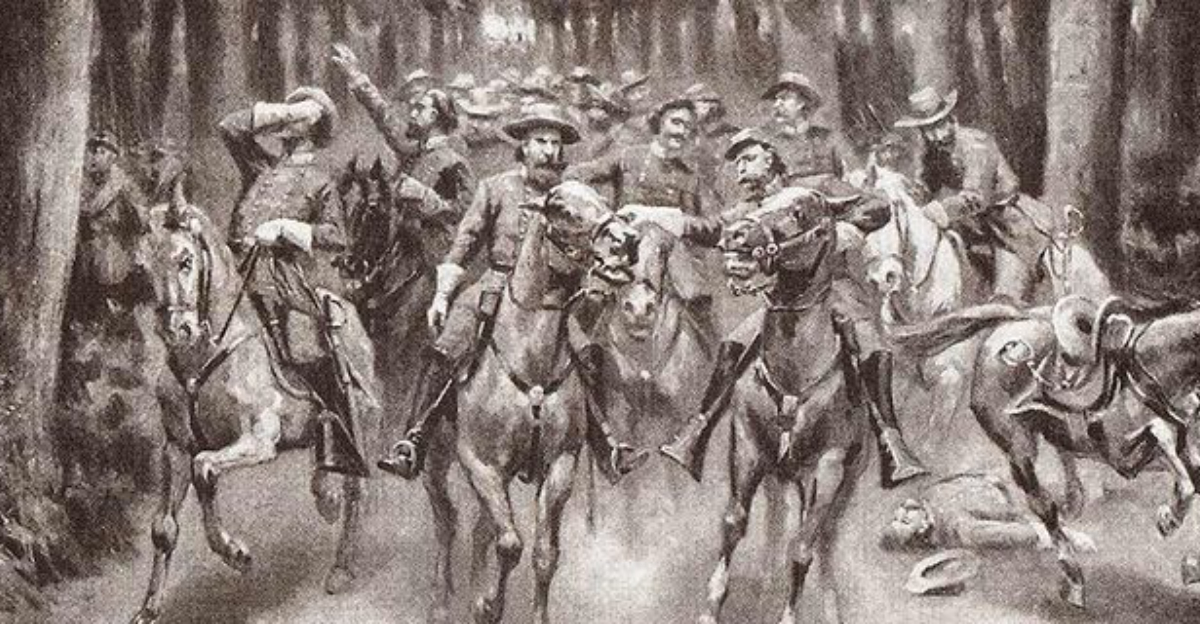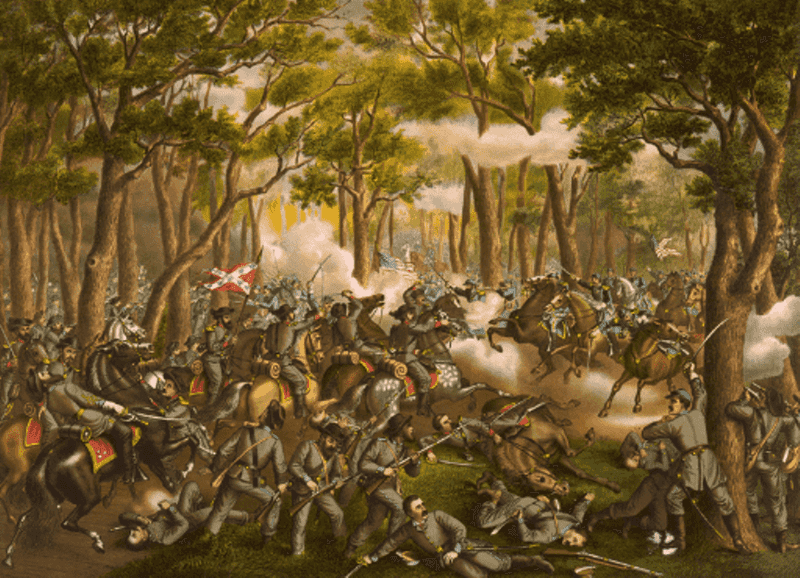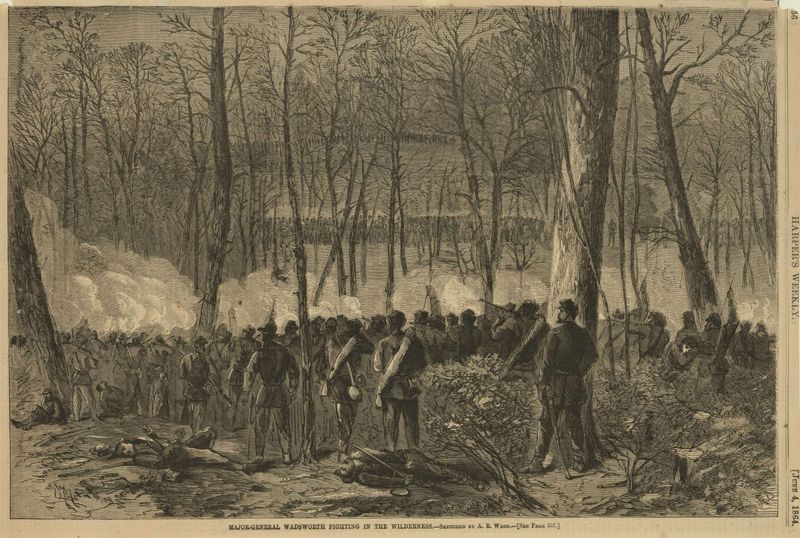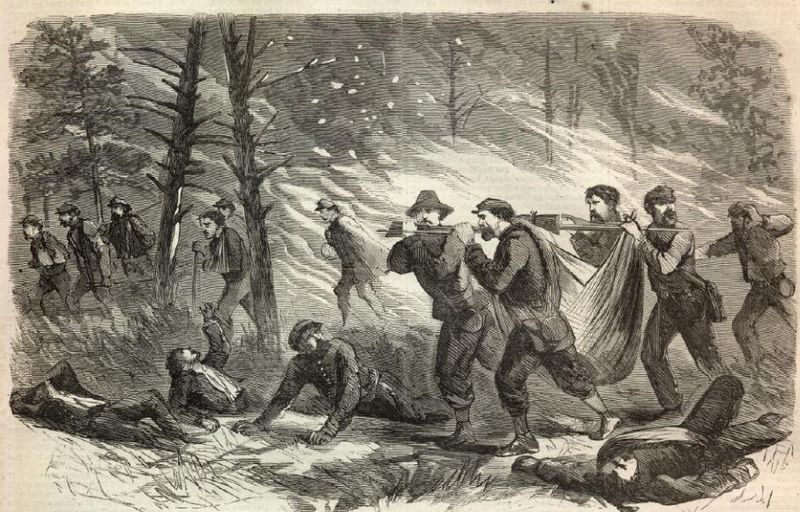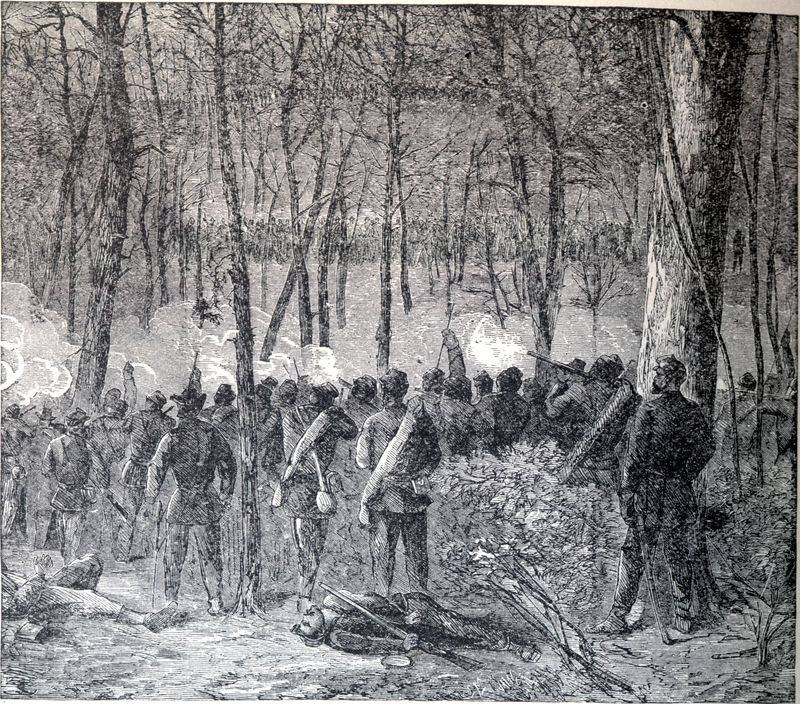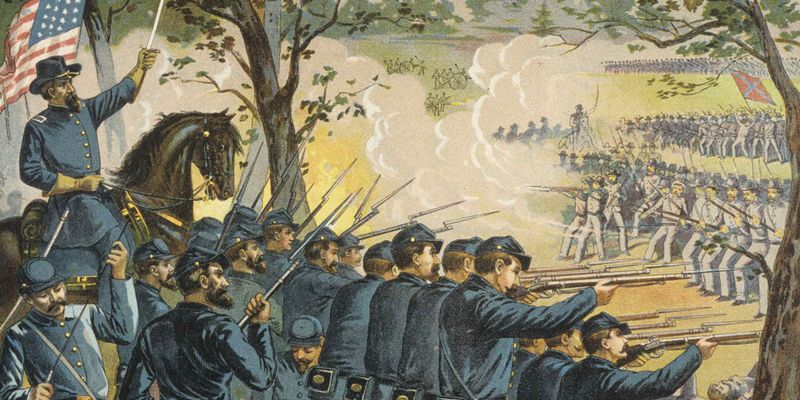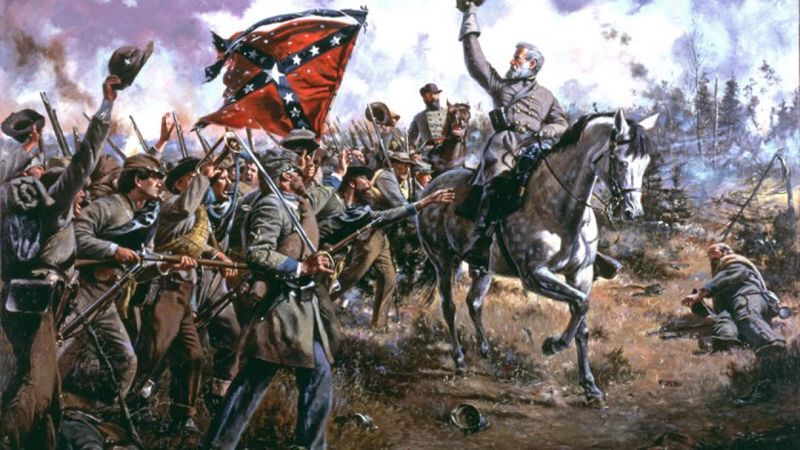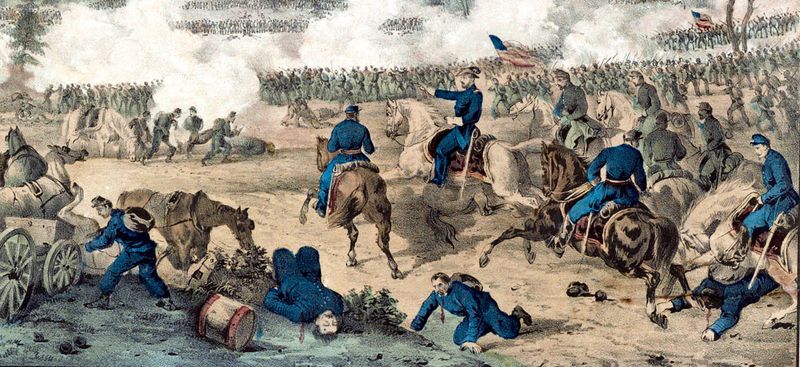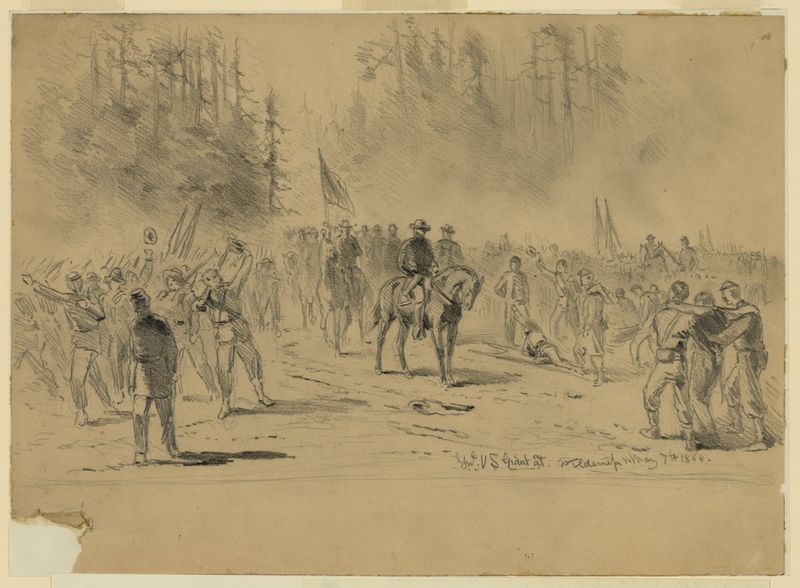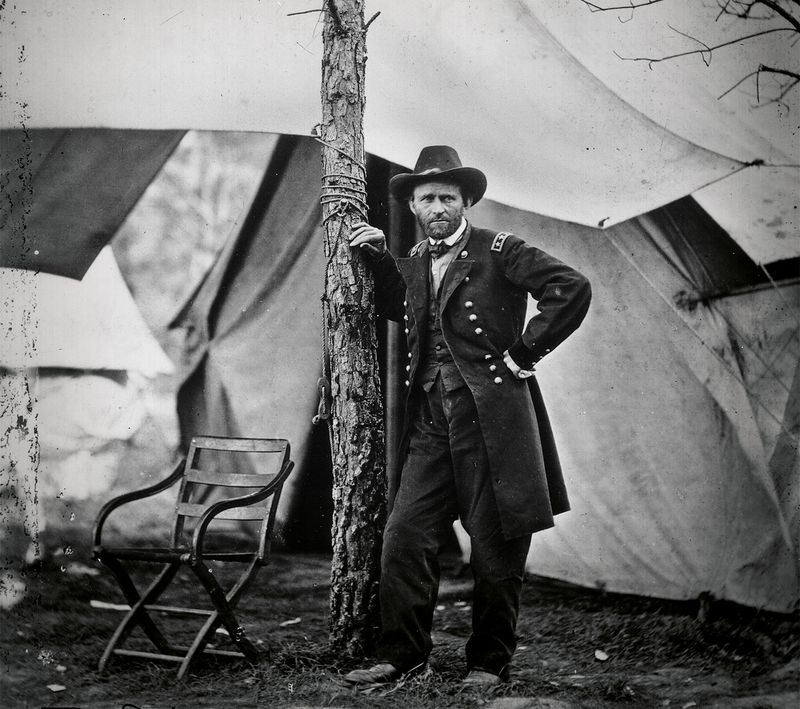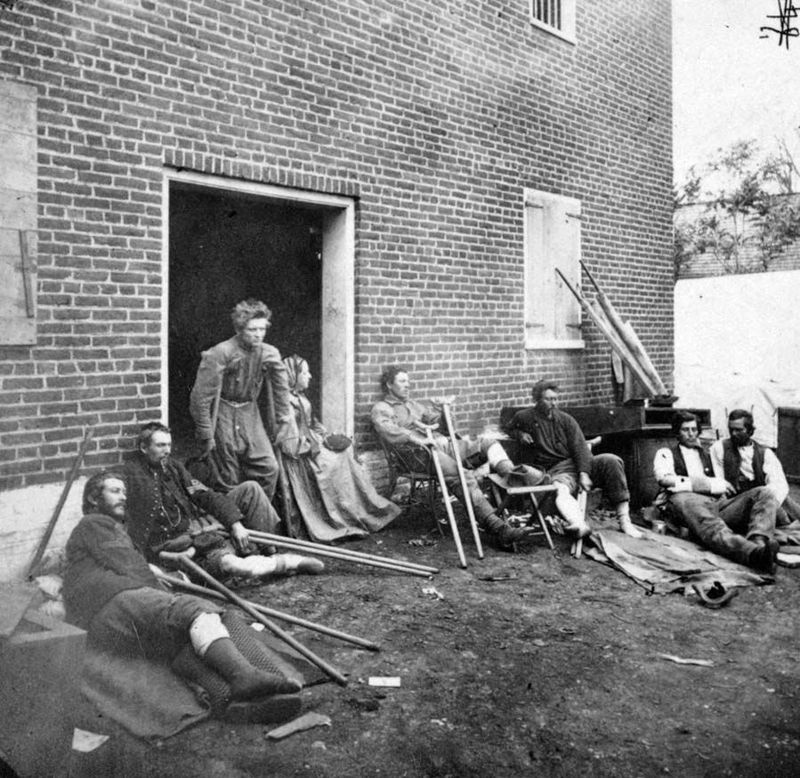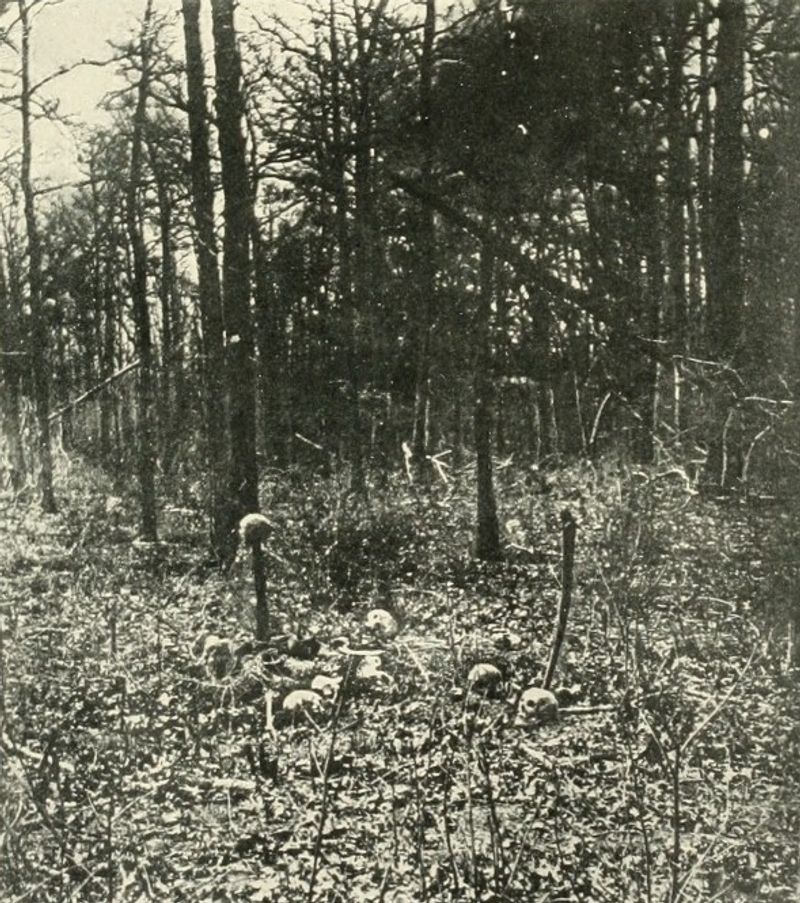The Battle of the Wilderness, fought from May 5-7, 1864, was a pivotal encounter between Union and Confederate forces. Taking place in a dense and tangled forest in Virginia, the battle marked the first showdown between Generals Ulysses S. Grant and Robert E. Lee. It was notorious for its brutal combat and high casualties, with neither side claiming a clear victory. This battle foreshadowed the relentless and bloody nature of the Overland Campaign, a critical series of battles in the American Civil War. Here are 12 gripping facts about this infamous engagement.
1. Grant’s First Battle Against Lee
Ulysses S. Grant’s first major clash with Robert E. Lee unfolded in the Wilderness. The newly appointed General-in-Chief of the Union Army faced the legendary Confederate leader in a dense Virginia forest. This confrontation was pivotal as it set the tone for Grant’s aggressive strategy throughout the Overland Campaign. Grant aimed to exploit his numerical advantage, breaking away from the cautious tactics of his predecessors. In this tangled wilderness, Grant’s determination to press Lee into continuous engagement marked a departure from past Union strategies. This moment heralded a shift toward relentless warfare.
This confrontation marked a significant departure from previous Union strategies.
2. Fighting in a Dense Forest
The Wilderness’s dense and tangled forest made it an unconventional battlefield. Soldiers struggled in the thick underbrush, where visibility was severely limited and movement hindered. This unique setting played a crucial role in shaping the battle’s chaotic nature. Combatants often engaged at close range, relying more on instinct than strategy. The dense forest amplified confusion, making organized maneuvers nearly impossible. This environment favored neither side, adding unpredictability to every skirmish. In this tangled wilderness, the usual tactics of open-field battles were rendered ineffective, highlighting the battle’s unique challenges.
Soldiers fought blindly, reducing the effectiveness of traditional strategies.
3. Fires Consumed the Wounded
Gunfire during the Battle of the Wilderness sparked devastating forest fires. As combat raged, these flames swept through the dense woods, igniting chaos and horror. Tragically, many wounded soldiers found themselves unable to escape the inferno. These fires consumed countless lives, adding a harrowing layer to the battle’s brutality. The roaring flames trapped soldiers, turning the wilderness into a deadly furnace. This unexpected peril contributed to the grim memory of the battle, intensifying its legacy of suffering.
The fires not only threatened lives but also hindered visibility, complicating the already chaotic environment of the battlefield.
4. Over 100,000 Troops Clashed
Over 120,000 soldiers took part in the Battle of the Wilderness, making it one of the largest engagements of the Civil War. The Union forces, numbering more than 60,000, clashed with an equally formidable Confederate army. This vast assembly of troops underscored the battle’s significance in the conflict between North and South. The sheer number of combatants transformed the dense Virginia forest into a chaotic theater of war. With so many lives at stake, the stakes were incredibly high, influencing the nature of the combat and the strategies employed.
The scale of this clash highlighted the intensity and unpredictability of war.
5. Inconclusive Outcome
Despite the ferocity and scale of the Battle of the Wilderness, it ended inconclusively. Both Union and Confederate forces incurred heavy casualties, but neither side gained a decisive upper hand. This stalemate reflected the grueling and often futile nature of the conflict. The inability to achieve a clear victory highlighted the challenges faced by both sides in the dense forest. This inconclusive outcome was a sobering reminder of the war’s complexity and the difficulties inherent in claiming dominance in such brutal conditions.
Neither army could break the deadlock, making the battle strategically frustrating for both commanders.
6. Lee’s Resilience in the Wilderness
Robert E. Lee’s Confederate forces, though outnumbered, displayed remarkable resilience during the Battle of the Wilderness. Despite the challenging terrain, Lee managed to hold his ground against repeated Union assaults. His strategic acumen and leadership were crucial in maintaining Confederate positions. Lee’s ability to adapt to the unpredictable environment of the dense forest demonstrated his tactical flexibility. This resilience was pivotal in preventing a Union breakthrough, showcasing Lee’s capability to inspire and lead his troops under immense pressure.
His presence and command ensured the Confederate army’s tenacity amid the chaos of the Wilderness.
7. Shattered Illusions of a Short War
The Battle of the Wilderness shattered any remaining illusions of a swift and decisive end to the Civil War. Its brutality and lack of resolution emphasized that the conflict was far from over. Soldiers on both sides faced the grim reality of prolonged and grueling warfare. This realization marked a turning point in the perception of the war’s duration and severity. The battle’s chaotic and inconclusive nature foreshadowed the prolonged struggle that lay ahead, forcing a reassessment of strategies and expectations.
The grim aftermath left soldiers and leaders alike questioning the path forward in this exhaustive conflict.
8. Staggering Casualties in Two Days
In just two days, the Battle of the Wilderness resulted in staggering casualties. More than 29,000 soldiers were killed, wounded, or went missing, underscoring the battle’s brutality. This high toll on both Union and Confederate forces exemplified the ferocious nature of the fighting. The dense forest, combined with the sheer scale of the engagement, contributed to the high number of casualties. These losses had a profound impact on morale and the course of the war, highlighting the human cost of the conflict.
The heavy casualties were a grim reminder of the war’s devastating impact on both sides.
9. Grant’s Relentless Advance
Unlike his predecessors, Ulysses S. Grant refused to retreat after the Battle of the Wilderness. Instead, he pressed forward, signaling a new phase of relentless warfare. His determination to engage Lee continuously marked a strategic shift in the Union approach. Grant’s resolve transformed the nature of the campaign, demonstrating his commitment to wearing down the Confederate forces. This relentless pursuit, despite the inconclusive outcome of the battle, underscored Grant’s tenacity and desire to achieve a decisive victory.
His aggressive strategy reshaped the Union’s effort, aiming to exhaust the Confederacy’s resources and will to fight.
10. Friendly Fire Strikes Confederate Command
The Battle of the Wilderness saw the tragic wounding of Confederate General James Longstreet by friendly fire. This incident echoed the fate of Stonewall Jackson a year earlier. Longstreet’s injury was a significant blow to the Confederate command structure. The confusion and dense forest contributed to this devastating mistake. The loss of Longstreet’s leadership during a critical phase of the battle had a palpable impact on Confederate morale and strategy.
His absence underscored the unpredictable and chaotic nature of the Wilderness, affecting the overall dynamic of the Confederate forces.
11. Night Fighting Chaos
The Battle of the Wilderness included chaotic night fighting that added to the horror. Soldiers, disoriented and terrified, often fired blindly into the darkness. The confusion was exacerbated by the dense forest and lack of visibility. This nocturnal combat amplified the chaos and fear, making coordination nearly impossible. The night fighting’s unpredictability exemplified the battle’s brutal and disorganized nature, highlighting the difficulties faced by both Union and Confederate troops.
This nightmarish scenario contributed to the grim reputation of the Wilderness, emphasizing the relentless nature of the struggle.
12. Beginning of the Overland Campaign
The Battle of the Wilderness marked the beginning of the Overland Campaign, a series of relentless conflicts that would define the Civil War’s final phase. Grant’s determination to press forward set the stage for this grueling campaign. The battle foreshadowed the intense and casualty-heavy nature of the coming engagements. This campaign aimed to continuously engage Lee’s forces, wearing down the Confederacy’s capacity to sustain the war.
The Wilderness was the harbinger of this relentless push, emphasizing the shift toward total warfare and the Union’s resolve to pursue a decisive victory.
